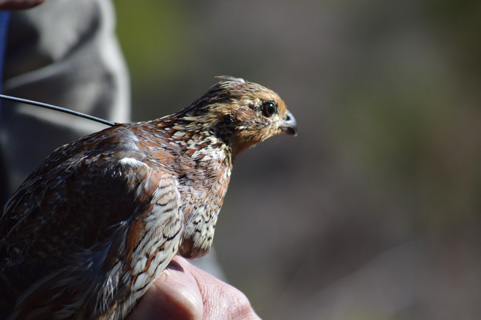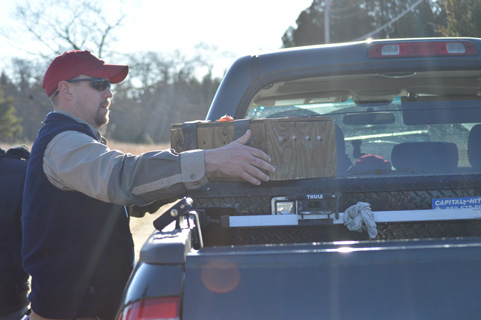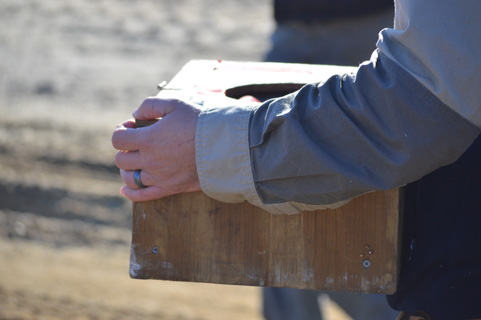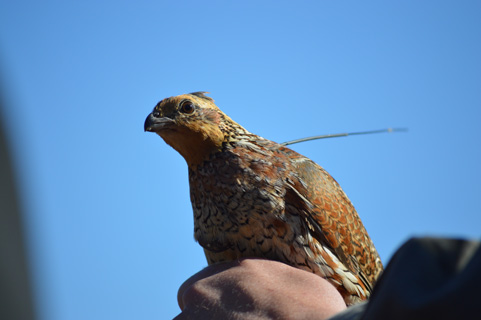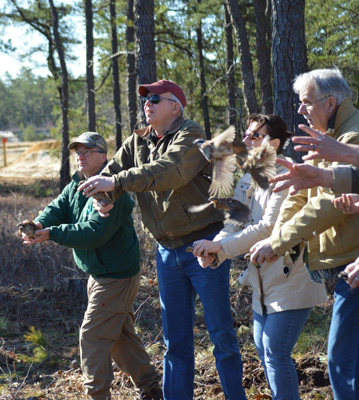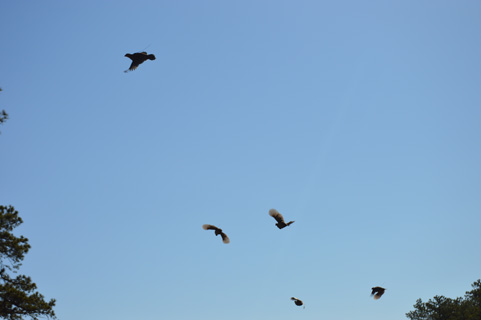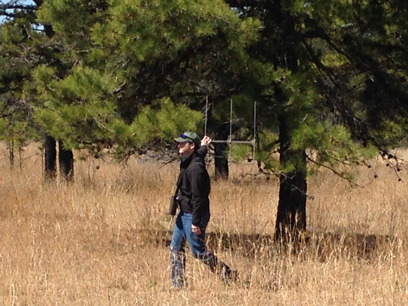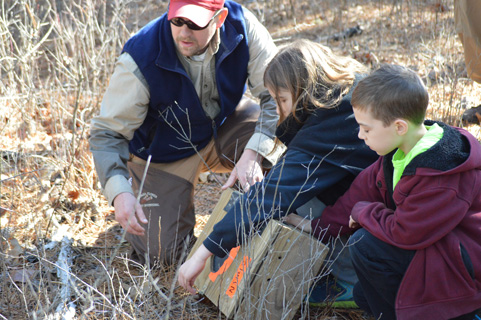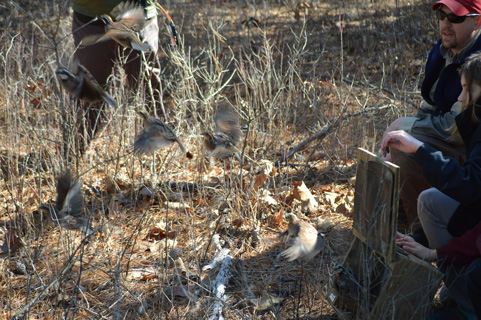This week on a beautiful Monday at Pine Island, John Parke of New Jersey Audubon brought a group out to see the property and hear about the latest on the Northern Bobwhite Restoration Initiative
John took the group out to Sim Place to meet with researchers Kaili Stevens and Phil Coppola and hear more about the history of the project in addition to recent developments. He briefly discussed how the project came about, as well as the strict criteria Tall Timbers had for possible translocation habitats: it could not be on public land, it had to have at least 1500 acres of quality quail habitat, it could not have quail on it already, and it must not have any stock birds or a stocking program, among other things. “When we found Pine Island, everything lined up perfectly,” John says.
“Now we’re into the second year of the project, and we can do a lot more,” he says. “We can translocate the wild birds from Georgia and compare the results here to other locations and see how the quail are adapting to new environments out of the south. Here, we’ve been able to show that birds made it through the winter this year by utilizing a lot of cut areas for cover in big winter storms. That was a big test; we worried about them being as hardy, wondered if would they adjust, and they came through with flying colors. The really cool thing about this year was when Phil [Coppola, of the University of Delaware] started telemetry work, he found a bird not collared but paired with one of our collared birds. Which means it was a young bird from last year who made it through! We needed to see that they could make it through winter into nesting season and reproduce. Last year was a great success.”
This year several nests fell victim to predation by pine snakes, but as John says, “that’s not really a doom-and-gloom scenario. This is part of the whole ecosystem. Quail are reproducing, but they’re also part of the food chain. Good habitat work means that sometimes, this is going to happen; it’s all part of the system!” It’s this optimism as well as the joy they take in the entire process that makes working with the staff at New Jersey Audubon such a pleasure, and the group of members who came to visit were just as lovely to speak with. It’s truly gratifying to meet with people who love this area as much as we do and appreciate what everyone is trying to accomplish!
As John said to the group on Monday: “It’s a very interesting situation here, and all this additional data coming out is valuable.”
















